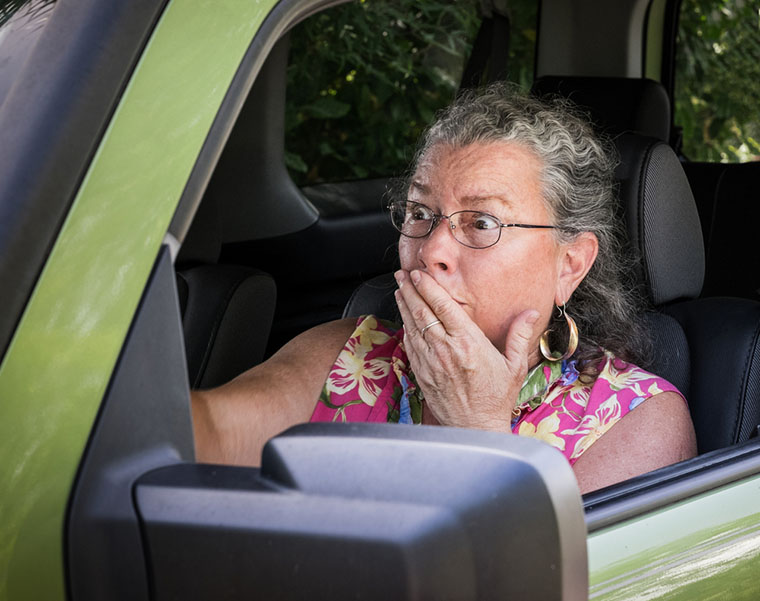There are over 40 million drivers over the age of 65. Many seniors are convinced that driving is their assurance that they can continue an independent lifestyle. The idea of having to rely on others to drive them instead of enjoying the freedom of getting in the car and going when and where they want is frightening.
The first step is to consider what can be done to help make your senior safer. Start with a physical exam—and some home care services do this for you. The fact that your loved one has arthritis, or other diseases associated with aging, does not automatically mean they should stop driving. The decision should be made based on their ability. Include a hearing and vision test in the exam. The difficulty they are having may be resolved by a new pair of glasses.
Another helpful step is an independent assessment of your senior’s driving ability. This can be done through a physical or occupational therapist. There are centers that provide assessments of the senior’s physical ability to drive, and these will work with the senior to improve any weaknesses.
Consider enrolling your senior in the CarFit program. This program was developed by AARP, the American Automobile Association (AAA), and the American Occupational Therapy Association. This program takes approximately 20 minutes for each participant. The purpose is to make sure that your senior’s personal vehicle is set properly for them.
Some of the things they will check include the position of the seat. The senior should be able to reach the foot pedals with the bottom of their foot, not just their toes. The driver should not be closer to the steering wheel than 10 inches. They will also teach the senior how to adjust the mirrors to minimize the driver’s blind spot.
AARP has an online course called the AARP Smart Driver Course. This course is specifically designed for drivers age 50 and over. Some things included in this course include using the new technology of today’s cars, how to manage a roundabout, and safe-driving strategies.

All these above strategies will help your senior stay on the road safely for a longer period but, sooner or later, your senior will reach the stage where driving is no longer safe. There are a number of signs that it is time:
- Getting lost while driving in familiar places due to increasing dementia
- Running stop signs or red lights
- Friends or relatives voicing concerns
- Confusion over traffic signals
- “Fender-benders” in the parking lots or minor scratches or dents that they can’t account for
- Riding the brakes (a sign that your senior doesn’t trust their ability to react quickly)
- Frequently driving at an unsafe speed
Another key sign that your senior shouldn’t be driving is when you stop allowing your kids to ride with your senior.
If you are lucky, your senior will be as concerned as you about their ability to continue driving. More likely you will face some resistance. If your senior has dementia, it may be more difficult. They may not believe there is anything wrong and they may have forgotten that they got lost on the way to the grocery store. There may come a point that, for their safety, you will need to take the keys or disable the car so it can’t be started. Fortunately, there are plenty of travel alternatives for seniors to help keep your senior safe.
- Be prepared. Most seniors believe that the end of driving is the end of independence. And, in some ways, it is! You can alleviate some of that feeling of loss and fear of change by coming to the discussion prepared. Surveys have indicated that most driving by the seniors is to go shopping or to visit friends. Think about where your senior travels in their car. If they go to church every Sunday or they belong to an organization or group that meets on scheduled days each week or month, those will need to be addressed.

- Public Transit. If your senior lives in a larger city, there may be public transit available. Your senior may just need a refresher on how to use the system. Buy a pass for them, so they don’t have to worry about having the correct amount. Get the bus schedule and figure out how they can get to their usual destinations. If they need to use an assistive device, some buses have lifts, so the rider doesn’t have to be able to climb steps.
- Uber. They may prefer to use a service like Uber or Lyft. This will give them door-to-door service at the time they want. Most will allow walkers, and some will help with a wheelchair.
- Taxi. Larger towns may have a taxi service available. This also will be door-to-door.
- Senior bus. Check with the senior center to see if they have a bus. These usually run only during the day, and they will be picking up other people, so seniors may have to ride the bus while they drop off or pick up others. Usually, this is a free service.
- Church volunteers. Many churches have volunteers that will assist seniors. Transportation could be one way they provide service.
- Friends and family. Offer to take your parent to events like church that you would go to also. Make a list of those who would be willing to transport your parent and what time of day they are available.
- Home care. Arrange for home care services to work with your loved one. The caregiver could come to the home and accompany your senior to the grocery store, help with the shopping, and then unload the groceries and help put them away. This will also give your loved one the opportunity to get used to having a caregiver in the home.

- Delivery service. More and more grocery stores offer delivery of your order. Check if the store your senior uses most often offers this service.
With preparation, the transition from driving to assisted traveling can be a smooth one, and your senior loved one will not feel limited at all.

